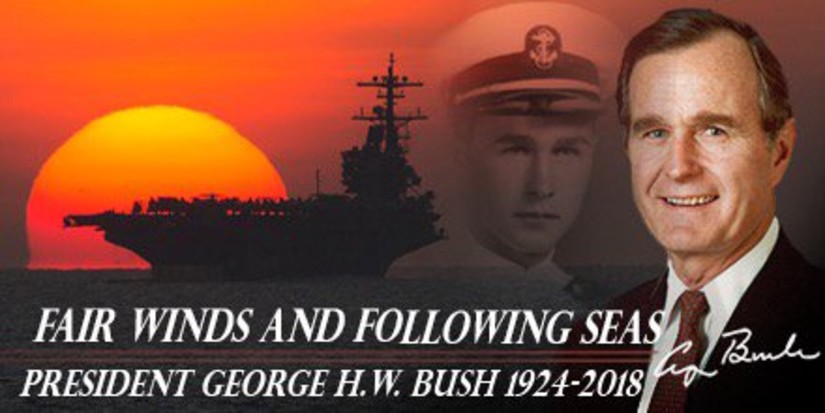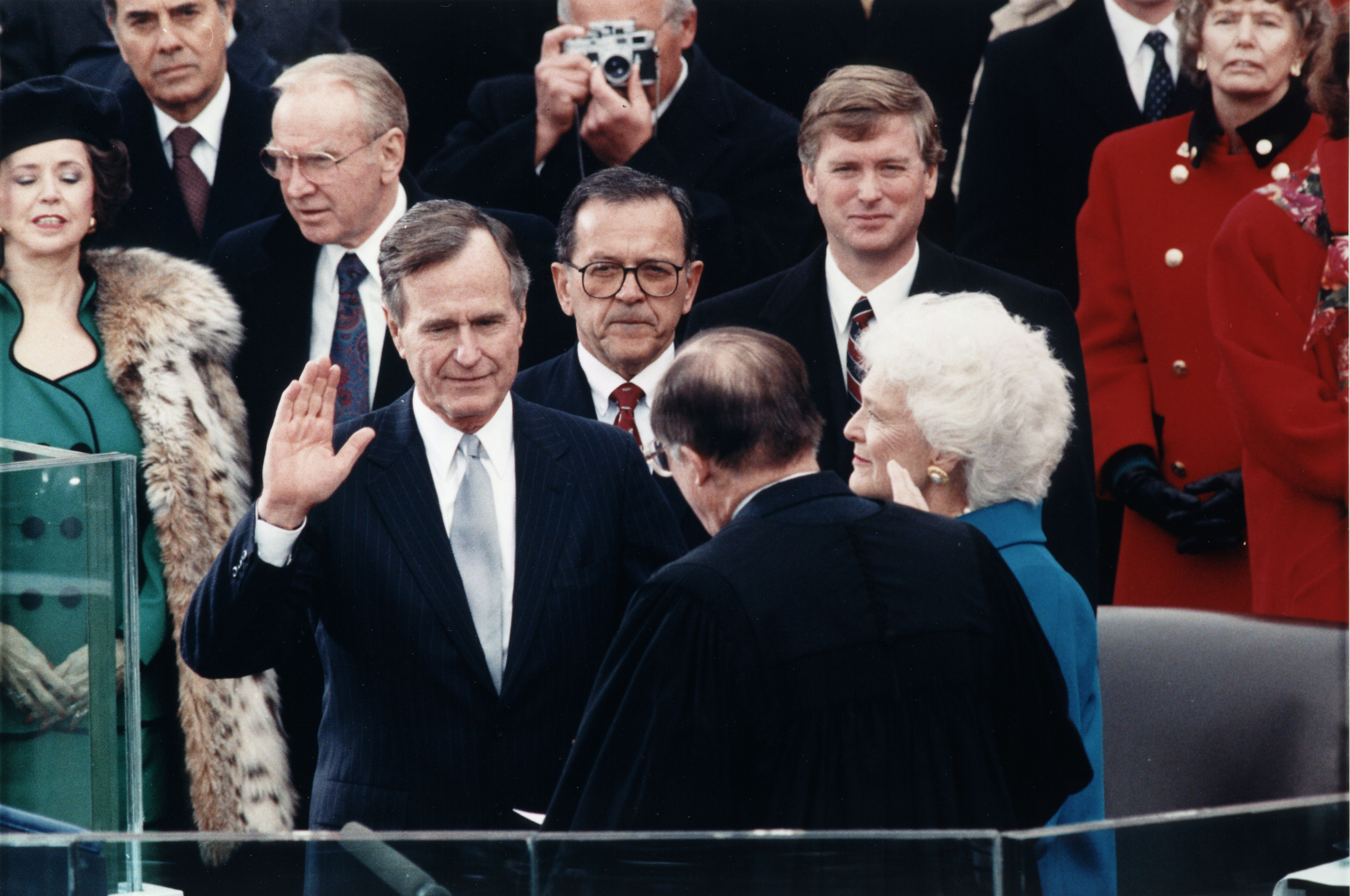
Following a week of national mourning, America’s 41st President George H.W. Bush will be put to rest on December 6, 2018. He will be buried at the George Bush Presidential Library at Texas A&M University alongside Barbara Bush, his wife of 73 years who died in April 2018, and Robin Bush, the daughter they lost to leukemia in 1953 at the age of 3. The 94-year-old former leader, who passed away on November 30, was the last veteran of World War II to serve as president and only the second one after John Adams to be the father of a president.
Mr. Bush, who led the country from 1989 to 1993, leaves behind a lasting legacy of world peace and stability. He is credited for skillfully architecting the peaceful ending of the Cold War as the Soviet Union dissolved into 15 new states in December 1991. Mr. Bush also organized and led a global coalition to defeat Iraqi leader Saddam Hussein’s military invasion of Kuwait.

His life before and after becoming the nation’s Commander-in-Chief was just as inspiring. In 1942, following the attack on Pearl Harbor that drew the United States into World War II, Mr. Bush deferred his admission to Yale University, and joined the US Navy. In June 1943 - just three days before his 19th birthday – he became one of the youngest aviators in the Navy at that time. Two years into the war, in 1944, Mr. Bush’s torpedo bomber was shot down, forcing him and two crew members to parachute into the water near the Japanese-occupied atoll of Chichijima in the western Pacific.
Unfortunately, the two crew members were shot by the enemy before they landed in the water. Mr. Bush, however, managed to survive and scramble onto a life raft, where he remained for over four hours, before being rescued by a US submarine. The harrowing experience did not stop the brave youngster from continuing to pilot torpedo bombers in several other successful missions. Mr. Bush’s outstanding combat record earned him the Distinguished Flying Cross and three air medals. When asked about his experience, he later said, “I was scared, but I was willing. I was young, but I was ready. I had barely started living when I began to see men die.”

Upon returning from the war, Mr. Bush attended Yale University where he led the baseball team to the finals of the first two College World Series. Upon graduating, he joined the private sector before transitioning into public office. After serving in various key positions, including the Director of the CIA, Mr. Bush made his first bid for President in 1980. He lost his party’s nomination to Ronald Reagan and instead became his running mate, spending the next eight years as vice president of the country. In 1988, Mr. Bush became the first sitting vice president to be elected president since Martin van Buren in 1836.
In 1993, after losing his second bid for the White House to Mr. Bill Clinton, Mr. Bush returned to Midland, Texas. He kept away from politics, instead preferring to spend his time on what he called “challenging” and “fulfilling” activities, like playing golf at, what his son George W. Bush described as, “a feverish pace.” Inspired by his hero, Winston Churchill, Mr. Bush also took up painting – focusing largely on portraits of his pets and world leaders he had met. He also established a charity to help wounded veterans, made several trips to Africa to raise cervical cancer awareness, and was a strong advocate for veterans suffering from post-traumatic stress.
